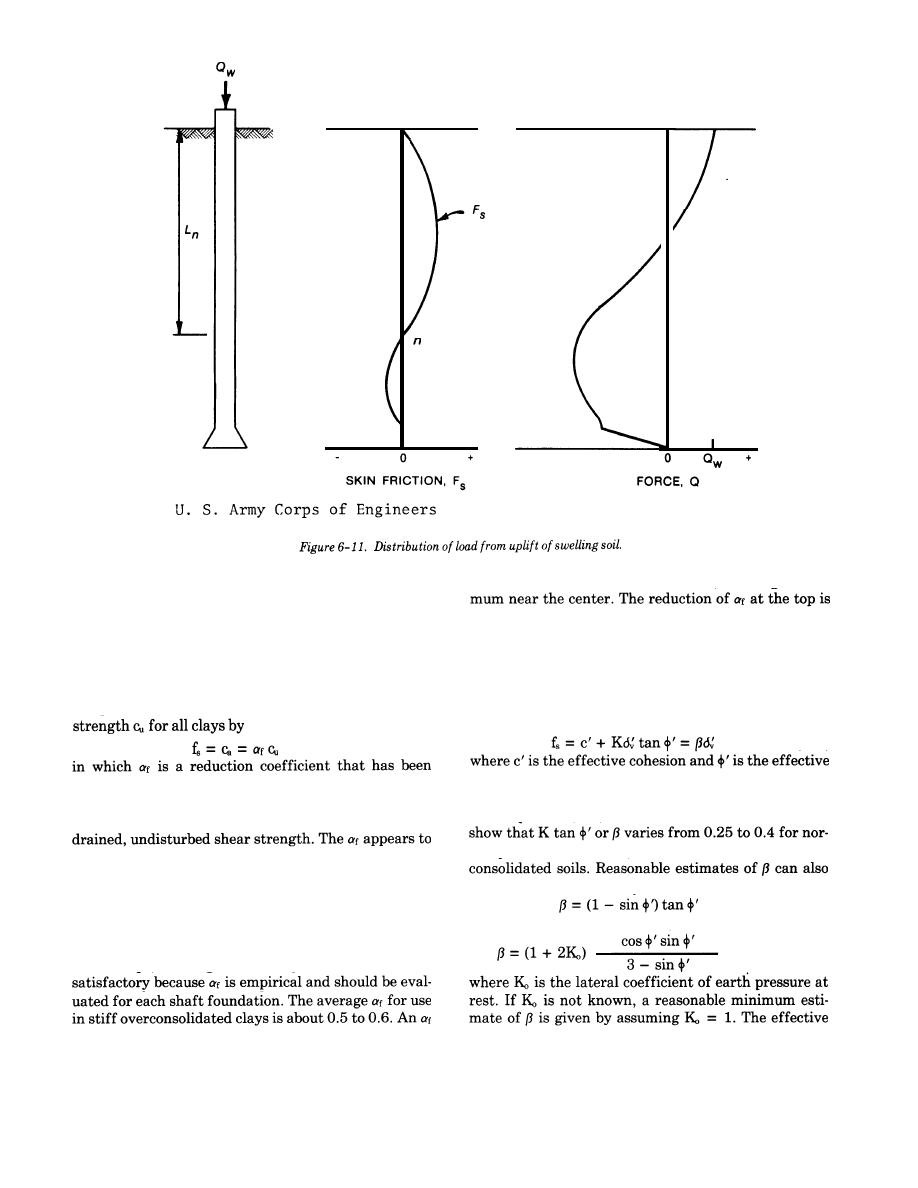
TM 5-818-7
bottom of the shafts in cohesive soils, reaching a maxi-
soil against concrete. The skin resistance, which is a
function of the type of soil (sand, clay, and silt), is
attributed to soil shrinkage during droughts and low
usually fully mobilized with a downward displacement
lateral pressure, while the reduction at the bottom is
of 1/2 inch or less or about 1 to 3 percent of the shaft
attributed to interaction of stress between end bearing
diameter. These displacements are much less than
and skin resistance.
those required to fully mobilize end bearing resistance.
(c) Skin resistance may also be evaluated in
terms of effective stress from results of drained direct
compared with the undrained, undisturbed shear
shear tests
(6-4)
(6-3)
angle of internal friction. The effective cohesion is as-
found to vary between 0.25 and 1.25 depending on the
sumed zero in practical applications and eliminated
type of shaft and soil conditions. The reduction factor
from equation (6-4). Most of the available field data
is the ratio of mobilized shearing resistance to the un-
mally consolidated soils, while it is about 0.8 for over-
be independent of soil strength. Also, the in situ reduc-
tion factor may appear greater than one depending on
be calculated for normally consolidated soils by
the mechanism of load transfer. For example, the
(6-5a)
shaft load may be transferred over some thickness of
and in overconsolidated soils by
soil such that the effective diameter of the shaft is
greater than the shaft diameter D,. The reduction fac-
(6-5b)
tor concept, although commonly used, is not fully
cohesion is often assumed to be zero.
of 0.25 is recommended if little is known about the soil
(2) Uplift forces. Uplift forces, which area direct
or if slurry construction is used.
function of swell pressures, will develop against sur-
The reduction factor approaches zero near the top and
6-15



 Previous Page
Previous Page
